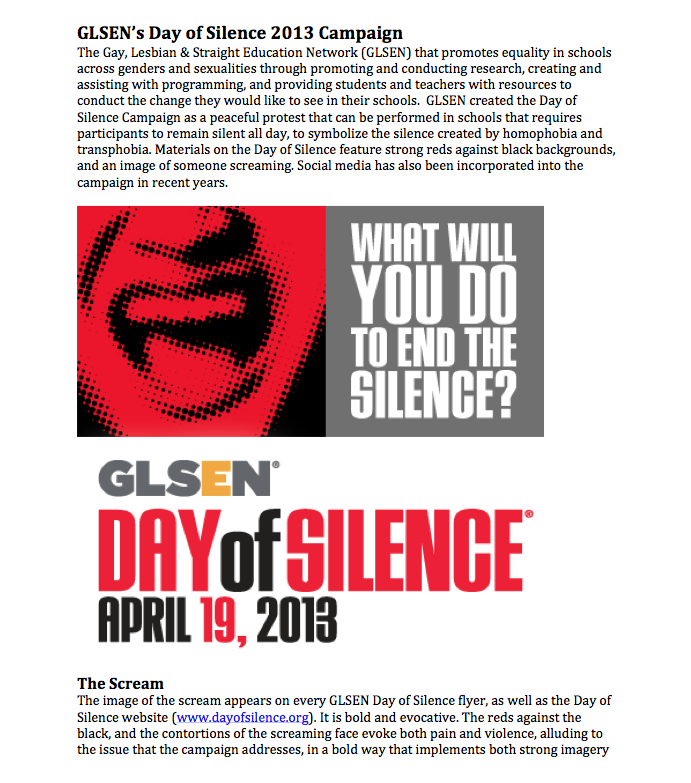Terrence and Lena: A Gay/Straight Team Focusing on LGBT Issues
The first student, Terrence, is a senior at East Carolina University and is also a gay-identified male. He grew up in the Greenville, North Carolina area. His story took place in one of my English courses: Introduction to Professional Writing (a 300-level course). For the second major project of the semester in our course (out of five), he partnered with Lena, a straight-identified woman. They were asked to work in a team to evaluate examples of publicity campaigns. Terrence had self-identified early on the first day of class when we as a group went around the room and talked about ourselves. He told the class he was an English major who was also an LGBT studies minor in the Women’s Studies Program. I noticed from then on that Terrence was eager to engage, on his own volition, queer subject matter in his professional-writing projects.
Partnering together, Terrence and Lena choose to evaluate a recent publicity campaign that GLSEN (the Gay, Lesbian, & Straight Education Network) ran around their annual Day of Silence to draw attention to the ways queer people (especially students) are often bullied and forced into silence in their schools. Other students chose campaigns from companies such as Coca-Cola or Nike or other nonprofits like the American Cancer Society. In this way, Terrence and Lena's choice of subject matter for their project was riskier in that it would prompt other students to ask why they had chosen this topic. Were they both gay? Was one of them gay?
Figure 1.1. shows an example of the type of media they analyzed from GLSEN and includes an excerpt of their rhetorical analysis of the reasons why the ad was effective. They point, for example, to the strong color schemes and images to convey urgency and fear (of being silenced or even emotionally and/or physically harmed). In addition to showing how this ad is effective professional communication, though, they imply their support for the campaign and encourage participation and education on the issues around this campaign.

Next, in figure 1.2, another example is given, this time from a social media image (distributed on Twitter, Facebook, and other Web spaces) for the Day of Silence. This figure also shows a bit of their conclusion to the report. They draw attention to diversity and human empathy as powerful in these cases. Both Terrence and Lena remarked later in student/teacher conferences that this subject choice was important to them because of Terrence’s own orientation and Lena’s friends who had dealt with being LGBT and queer.

Figure 1.2 shows an especially strong example to me because two students in a professional-writing course had used an assignment that was aiming to teach them about the genre of the analytical report to also educate (themselves and their readers) and inform about an important social issue often stigmatized as “too personal” and not a professional issue. For Terrence and Lena, participation was about not just fulfilling the minimum requirements or expectations of the assignment or classroom, but about participating in social change and aligning themselves with messages they saw as timely and critical.
[Go to "Casey: A queer Graduate Student’s Story of Anger and Disappointment"]